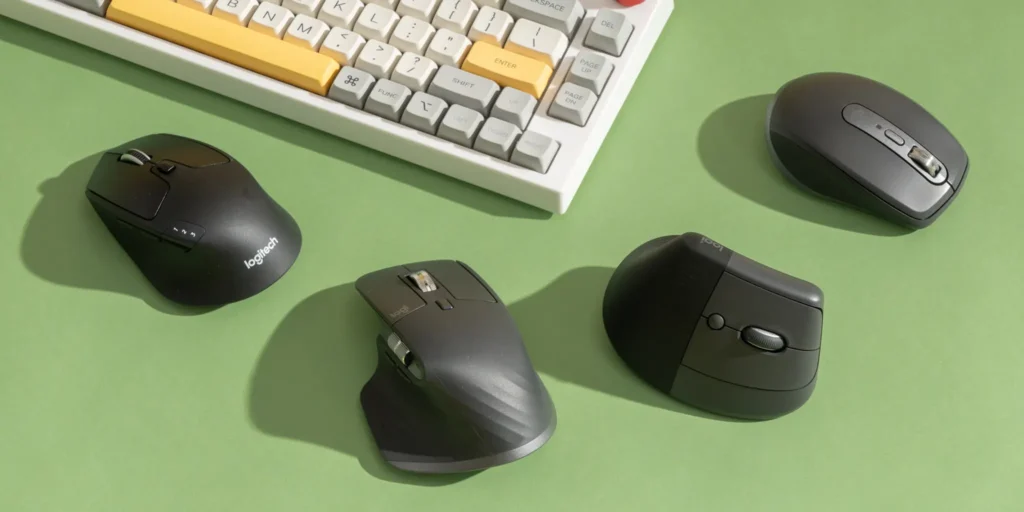In today’s digital world, efficiency and convenience matter more than ever. Whether you’re working from home, gaming, or managing an IT infrastructure, having the right wireless keyboard and mouse can significantly enhance your productivity. The days of tangled wires are long gone, and wireless peripherals now offer seamless connectivity, a clutter-free workspace, and unmatched flexibility.
Among the many options available, Dell stands out as a trusted name in computers & accessories, offering high-quality wireless keyboards and mice designed for professionals, gamers, and casual users alike. With long battery life, ergonomic designs, and high-performance connectivity, Dell’s wireless peripherals deliver an exceptional user experience.
This guide will take a deep dive into everything you need to know about Dell wireless keyboards and mice, covering types, top models, performance benchmarks, troubleshooting tips, and the best deals available. If you’re looking to save up to $600 off best-selling PCs, check out Dell’s exclusive Presidents’ Day Deal and other seasonal discounts for Dell Rewards members.
Dell Wireless Keyboard and Mouse: The Ultimate Guide

Overview of Dell Wireless Keyboards and Mice
Why Choose Dell Wireless Peripherals?
Dell’s wireless keyboards and mice are built for durability, efficiency, and performance. Whether you’re looking for a compact office setup, a gaming powerhouse, or a dual-mode device that works across multiple systems, Dell has a solution for you.
Here’s why Dell keyboards & mice are among the best in the market:
- Build Quality & Design: Crafted with high-quality materials, Dell’s peripherals are durable, ergonomic, and comfortable for long hours of use.
- Wireless Connectivity Options: Choose between Bluetooth and 2.4 GHz USB connectivity for seamless, lag-free performance.
- Battery Life & Power Efficiency: Many Dell wireless keyboards and mice offer up to 36 months of battery life, ensuring long-term usage without frequent replacements.
- Multi-Device Connectivity: Select models, such as the KM7120W, allow you to switch between multiple devices effortlessly.
- Customizable Features: Many Dell models include programmable keys and adjustable DPI settings for a tailored experience.
Who Should Buy a Dell Wireless Keyboard and Mouse?
Whether you’re a professional, gamer, or casual user, Dell offers the right keyboard & mouse combo for your needs:
- Office Professionals – Need a reliable, ergonomic keyboard and mouse combo for extended work hours.
- Gamers – Require low-latency input, high-DPI sensors, and mechanical keyboards for precision.
- Programmers & Developers – Prefer ergonomic keyboards with programmable function keys for efficiency.
- Casual Home Users – Appreciate wireless convenience and minimal desk clutter for everyday use.

Types of Dell Wireless Keyboards & Mice
Wireless Keyboards
Membrane vs. Mechanical – Which is Better?
- Membrane keyboards are quieter and more affordable, making them great for offices and shared spaces.
- Mechanical keyboards offer tactile feedback and faster response times, making them ideal for gamers and programmers.
Ergonomic vs. Standard Layout
- Ergonomic keyboards are designed for comfort, featuring split layouts and padded wrist rests to reduce strain.
- Standard layouts are compact, familiar, and widely preferred for general use.
Full-Size vs. Compact (TKL) Keyboards
- Full-size keyboards include a dedicated number pad, ideal for professionals working with numbers.
- Compact (TKL) keyboards remove the number pad, making them sleek and portable for on-the-go users.
Multimedia & Programmable Keys
Many Dell keyboards feature programmable function keys, enabling shortcut customization for improved workflow efficiency.
Wireless Mice
Standard Office Mouse vs. Precision Mouse
- Standard office mice offer basic functionality with a comfortable grip.
- Precision mice come with adjustable DPI settings, making them perfect for graphic designers, gamers, and editors.
Multi-Device Support & Programmability
- Some Dell mice, like the KM7120W, allow multi-device connectivity, letting you switch between PCs, tablets, and laptops effortlessly.
Battery-Powered vs. Rechargeable
- Battery-powered mice last longer without the need for frequent charging.
- Rechargeable mice are eco-friendly and eliminate the hassle of replacing batteries.
Silent Click vs. Standard Click Models
- Silent-click mice are ideal for quiet workspaces.
- Standard-click mice provide tactile feedback and better control.

Best Dell Wireless Keyboard and Mouse Combos (Top Picks)
| Model | Price | Connectivity | Battery Life | Best For |
| KM3322W | $49.99 | 2.4 GHz USB | 36 months | Budget Users |
| KM7120W | $84.99 | Bluetooth & 2.4 GHz | 36 months | Multi-Device Users |
| KM7321W | $159.99 | Bluetooth & 2.4 GHz | 36 months | Professionals |
Performance Metrics & User Experience
Typing Speed & Key Response Time
- Dell wireless keyboards offer low-latency typing and fast keystroke registration.
Mouse Sensitivity & DPI Accuracy
- Adjustable DPI settings ensure smooth performance for gaming, editing, and general navigation.
Connectivity Stability & Latency Test
- Bluetooth and USB receivers ensure a stable connection, reducing the risk of lag or dropouts.
How to Set Up a Dell Wireless Keyboard and Mouse
Unboxing and Checking Components
- Look for the USB receiver (often hidden under the keyboard or inside the mouse).
Pairing via Bluetooth or USB Receiver
- USB pairing: Plug in the receiver and allow automatic driver installation.
- Bluetooth pairing: Enable pairing mode and connect via Settings > Bluetooth & Devices.
Troubleshooting & Maintenance Guide
Common Connection Issues & Fixes
- Device not recognized? Try a different USB port.
- Mouse pointer not moving? Check the sensor and batteries.
Battery Replacement & Power Management
- Use high-quality batteries to maximize performance and longevity.
Firmware & Software Updates
- Keep your drivers updated via Dell SupportAssist for optimal performance.

Dell vs. Competitor Brands (Logitech, HP, Microsoft, Razer)
| Brand | Features | Price | Best For |
| Dell | Long battery life, multi-device support | Mid-Range | Office, Productivity |
| Logitech | Customizable software, gaming features | Mid-High | Gamers |
| HP | Budget options, basic features | Low-Mid | Casual Users |
| Razer | High DPI, RGB customization | High | Gamers & Creators |
Best Deals & Where to Buy Dell Wireless Keyboards & Mice
Online vs. Offline Purchasing Guide
- Dell Official Store: Exclusive deals for Dell Rewards members.
- Amazon & Best Buy: Frequent discounts and fast shipping.
Seasonal Sales & Discounts
Presidents’ Day Deal, Cyber Monday, and other events can help you save up to $600 off best-selling PCs.
Related Articles
Alienware Wireless Keyboard and Mouse
Ares-M2-Gaming-Keyboard
Blackweb-Gaming-Keyboard
Onn-Gaming-Keyboard
Hp-Wireless-Keyboard
People Also Asked
How do I connect my Dell wireless keyboard and mouse to my computer?
Connecting your Dell wireless keyboard and mouse is a straightforward process. Insert the provided batteries, plug in the receiver to a USB port, and follow the manual syncing process. If the devices aren’t recognized, check battery polarity, the receiver’s connection, and try a different USB port.
Can I use Dell’s wireless keyboard and mouse for gaming, or is wired still the preferred choice for gamers?
Dell’s wireless combo is designed with low-latency technology, making it a suitable choice for gaming. The setup provides a responsive and lag-free experience, challenging the traditional belief that wired peripherals are necessary for gaming.
How can I maximize the battery life of my Dell wireless keyboard and mouse?
To optimize battery life, take advantage of the power-saving features, such as sleep modes, and adjust the settings for optimal efficiency. Regularly check battery levels and replace them as needed. This proactive approach ensures a longer lifespan for your wireless peripherals.
Is the Dell wireless combo compatible with different operating systems and devices?
Yes, Dell’s wireless technology is designed for versatility. Whether you use a laptop, desktop, or tablet, the wireless keyboard and mouse seamlessly connect to enhance your computing experience. Compatibility extends to various operating systems, making it easy to switch between devices without any hassle.
Can I customize the functions of my Dell wireless keyboard and mouse?
Absolutely. Dell provides a powerful software suite that allows for extensive customization. You can assign specific functions to keys, create macros for repetitive tasks, and adjust mouse sensitivity and button configurations. This level of customization ensures that your wireless setup aligns perfectly with your preferences and work style.

